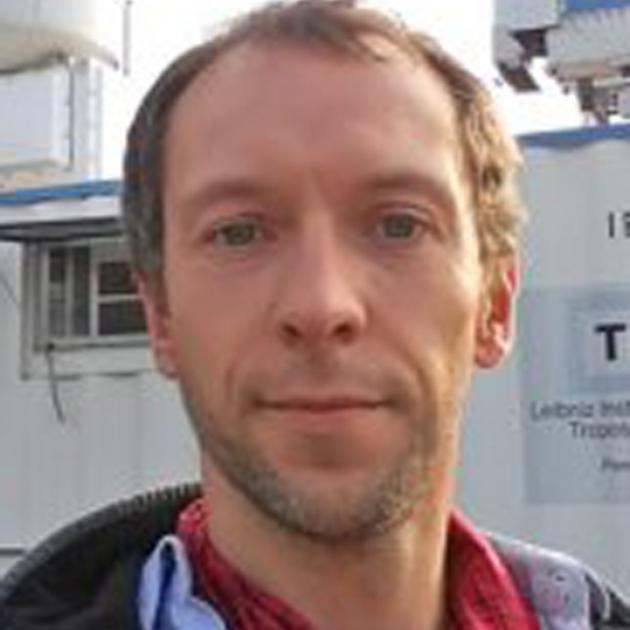Science
Laser Research Project Launches Near Invercargill Airport

Researchers have initiated a significant atmospheric study near Invercargill Airport, utilizing a laser beam to gather data on the effects of aerosols in the atmosphere. This project, named goSouth-2, is a collaboration between institutions from Germany and New Zealand, aiming to deepen the understanding of how airborne particles influence cloud formation and climate.
The German partners in this venture include the Meteorological Institute of the University of Leipzig and the Leibniz Institute for Tropospheric Research (TROPOS). New Zealand’s contributors are MetService, the University of Canterbury, and The Air Quality Collective. As part of the preparations, five staff members from TROPOS are setting up equipment, with the project scheduled to officially launch on September 3, 2023.
Aerosols, which are tiny particles suspended in the atmosphere, originate from various sources on land and sea, including salt, dust, pollen, and emissions from smoke or volcanic activity. According to Patric Seifert, a researcher at TROPOS, these particles play a crucial role in cloud formation by acting as nuclei for cloud droplets. He explained, “The less aerosol particles are available, the less cloud particles can form, and vice-versa.”
The southern tip of New Zealand provides a unique opportunity for this research due to its diverse atmospheric conditions. When air masses from the Antarctic approach, the atmosphere tends to be very clean, contrasting sharply with the more polluted continental air masses that arrive from Australia. Understanding the differences in aerosol content between these air masses will enable researchers to assess how clouds react to variations in aerosol levels.
Current atmospheric and climate models exhibit less accuracy in simulating clouds over the Southern Ocean compared to the northern hemisphere. Dr. Seifert noted that the disparity in aerosol levels between the two hemispheres may account for the differences in model performance, as there is significantly more data available from the northern hemisphere, which is generally more polluted.
Invercargill was selected as the research site not only for its unique atmospheric conditions but also for the logistical support available for equipment operation and staff accommodation. MetService has been conducting vital observations at the site, including long-term records of weather balloon soundings, precipitation measurements, and assessments of solar and thermal radiation.
While the primary instruments for data collection are land-based, residents near Invercargill Airport may notice a green laser beam in the sky. This beam is part of the lidar (light detection and ranging) system employed by researchers to investigate aerosols. The laser is fixed in position, and airport staff have been informed about its presence.
In addition to lidar technology, researchers will utilize radar systems to monitor and analyze cloud patterns and precipitation. The TROPOS team will remain on site for 18 months, while a group of about 15 researchers in Germany will focus on data analysis.
This project follows the goSouth-1 study, which took place in 2022. That month-long research initiative, conducted approximately 50 kilometers from Invercargill, laid the groundwork for the more extensive investigations planned in goSouth-2. The findings from this new project could significantly enhance our understanding of atmospheric dynamics and contribute to more accurate climate modeling in the future.
-

 World4 months ago
World4 months agoTest Your Knowledge: Take the Herald’s Afternoon Quiz Today
-

 Sports4 months ago
Sports4 months agoPM Faces Backlash from Fans During Netball Trophy Ceremony
-

 Lifestyle4 months ago
Lifestyle4 months agoDunedin Designers Win Top Award at Hokonui Fashion Event
-

 Entertainment4 months ago
Entertainment4 months agoExperience the Excitement of ‘Chief of War’ in Oʻahu
-

 Sports4 months ago
Sports4 months agoLiam Lawson Launches New Era for Racing Bulls with Strong Start
-

 World5 months ago
World5 months agoCoalition Forms to Preserve Māori Wards in Hawke’s Bay
-

 Lifestyle4 months ago
Lifestyle4 months agoDisney Fan Reveals Dress Code Tips for Park Visitors
-

 Health4 months ago
Health4 months agoWalking Faster Offers Major Health Benefits for Older Adults
-

 Politics4 months ago
Politics4 months agoScots Rally with Humor and Music to Protest Trump’s Visit
-

 Top Stories5 months ago
Top Stories5 months agoUK and India Finalize Trade Deal to Boost Economic Ties
-

 Health2 months ago
Health2 months agoRadio Host Jay-Jay Feeney’s Partner Secures Visa to Stay in NZ
-

 World5 months ago
World5 months agoHuntly Begins Water Pipe Flushing to Resolve Brown Water Issue









